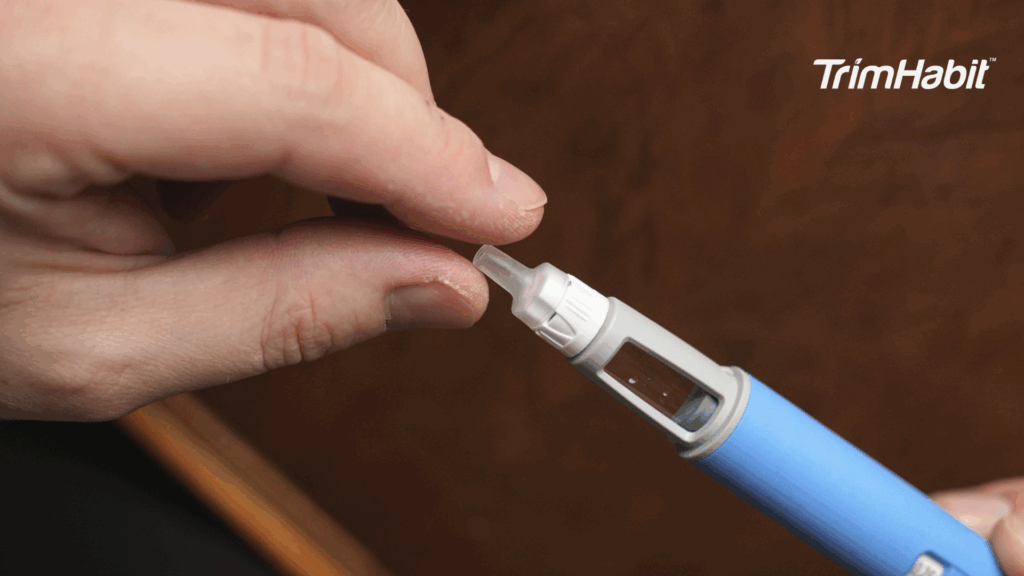For women, the menstrual cycle plays a significant role in how the body responds to fasting. Hormonal fluctuations throughout the menstrual cycle can impact energy levels, appetite, mood, and insulin sensitivity.
Understanding how to adjust intermittent fasting during menstruation cycles is crucial for improving health and maintaining a well-rounded fasting routine.
Let’s explore how different menstrual cycle phases affect fasting and offer practical strategies for adjusting your fasting routine based on hormonal shifts.
What Is the Menstrual Cycle?
The menstrual cycle is the monthly process by which a woman’s body prepares for potential pregnancy. This cycle is divided into four main phases: the menstrual phase, follicular phase, ovulatory phase, and luteal phase1,2. Fluctuations in critical hormones such as estrogen and progesterone govern each phase.
Menstrual Phase
The menstrual phase is the first phase of the menstrual cycle, marked by the shedding of the uterine lining. This occurs when there is no fertilization, leading to a drop in hormone levels, particularly estrogen and progesterone. The uterine lining, thickened in preparation for a potential pregnancy, is no longer needed and is expelled from the body1,3.
Follicular Phase
The follicular phase begins right after the menstrual phase and continues until ovulation. This phase typically lasts about 7-10 days, depending on the length of your cycle1.
During this time, follicle-stimulating hormone (FSH) is released by the pituitary gland, prompting the ovaries to produce follicles that house immature eggs. As these follicles mature, estrogen levels rise, preparing the uterine lining for a potential pregnancy4.
Ovulatory Phase
The ovulatory phase is brief but significant in the menstrual cycle, typically lasting 3-4 days. Ovulation marks the release of a mature egg from the ovary, triggered by a surge in luteinizing hormone (LH). This is the body’s peak fertility period, as the egg is available for fertilization for about 12-24 hours1,3.
Luteal Phase
The luteal phase occurs after ovulation and lasts 12-14 days, ending just before the next menstrual period. During this phase, the body prepares for pregnancy by producing progesterone, secreted by the corpus luteum—the structure formed from the follicle that released the egg1,5. If fertilization doesn’t occur, progesterone and estrogen levels drop, signaling the start of menstruation.
How Does Intermittent Fasting Impact Hormones
Intermittent fasting can influence hormonal balance, particularly estrogen and progesterone. The effects vary depending on the phase of the menstrual cycle.
- Insulin Sensitivity: Research suggests fasting improves insulin sensitivity6,7, which may fluctuate during different cycle phases.
- Appetite Regulation: Studies show intermittent fasting can regulate appetite-related hormones8.
How To Adjust Intermittent Fasting During Menstruation Cycles
Fasting During the Menstrual Phase
When menstruation occurs, the menstrual phase typically lasts 3-7 days. Hormonal levels are at their lowest, and energy levels may be affected9,10.
- Energy Levels: Fatigue is expected during this phase, and fasting can add stress.
- Reduced Inflammation: Fasting during menstruation may help reduce inflammation, but it is essential to listen to your body and adjust fasting windows.
Tips for Fasting During the Menstrual Phase
- Shorten Your Fasting Window: Consider a less aggressive fasting window, such as 12-14 hours.
- Focus on Gut Health: To support digestion, include gut-friendly foods like fermented vegetables and bone broth.
- Avoid Higher Intensity Workouts: Opt for gentle exercises like yoga or walking.
Fasting During the Follicular Phase
The follicular phase begins after menstruation and lasts until ovulation. Estrogen levels rise during this phase, often associated with increased energy and better insulin sensitivity3.
- Insulin Sensitivity Starts: The body’s response to insulin improves during this phase, making it an ideal time for longer fasting windows.
- Increased Appetite: You may experience a slight increase in appetite as estrogen levels rise.
Tips for Fasting During the Follicular Phase
- Extend Your Fasting Window: This is a great time to try 16:8 or alternate-day fasting.
- Incorporate Healthy Fats: Focus on foods like olive oil, avocado, and oily fish to fuel your body.
- Include Higher Intensity Workouts: This phase supports more intense physical activity, helping to fuel higher-intensity workouts.
Fasting During the Ovulatory Phase
Ovulation occurs around the middle of the cycle when an egg is released. Hormonal levels peak, and the body prepares for pregnancy11.
- Body Prepares for Ovulation: Estrogen levels peak, and luteinizing hormone triggers ovulation.
- Appetite and Energy: Many women experience a surge in energy but may also feel mood swings or brain fog.
Tips for Fasting During the Ovulatory Phase
- Stick to Moderate Fasting Windows: Consider sticking to 14-16 hour fasts during ovulation.
- Balance Carbohydrate Intake: Increase complex carbohydrates like sweet potatoes and whole grains to support energy needs.
- Focus on Reproductive Function: Support hormonal health by eating nutrient-dense foods like leafy greens and lean proteins.
Fasting During the Luteal Phase
The luteal phase follows ovulation and lasts until the start of the next menstrual cycle. Progesterone levels rise, affecting appetite, energy, and mood12.
- Progesterone Levels Rise: Higher progesterone levels can increase appetite, carbohydrate cravings, and fatigue.
- Late Luteal Phase: PMS symptoms, including bloating, mood swings, and brain fog, are common during this time.
Tips for Fasting During the Luteal Phase
- Reduce Carbohydrate Intake: Focus on complex carbohydrates and avoid simple carbohydrates to prevent blood sugar spikes.
- Practice Cycle Synchronization: Adjust your fasting window to accommodate hormonal fluctuations—consider reducing fasting times to 12 hours.
- Focus on Hormonal Imbalances: Support hormone balance by including magnesium-rich foods like nuts and seeds in your diet.
Potential Challenges Of Fasting During the Menstrual Cycle
Hormonal Imbalances
Women with hormonal imbalances, such as anovulatory polycystic ovary syndrome (PCOS), may face challenges with intermittent fasting. Hormonal imbalances can affect how the body responds to fasting and calorie restriction13,14.
- Insulin Resistance: Women with PCOS often have insulin resistance, making fasting more challenging during certain cycle phases15.
- Cycle Syncing for PCOS: Tailoring fasting according to hormonal phases may help reduce symptoms related to PCOS16.
Exercise Intensity
Higher-intensity workouts can be challenging during menstrual and late luteal phases when energy levels are low. It’s essential to listen to your body and adjust exercise and fasting accordingly.
- Reduce Exercise Intensity: Consider reducing the intensity of your workouts during the late luteal and menstrual phases.
- Fuel Workouts with Healthy Fats: Incorporate healthy fats like avocado and olive oil to fuel your body during exercise.
Conclusion
Intermittent fasting can be a powerful tool for weight loss, hormonal balance, and overall health. However, understanding how to adjust intermittent fasting during menstruation cycles is essential for women. Tailoring your fasting routine to the different phases of the menstrual cycle—menstrual, follicular, ovulatory, and luteal—can enhance your health and support a more effective fasting practice.









